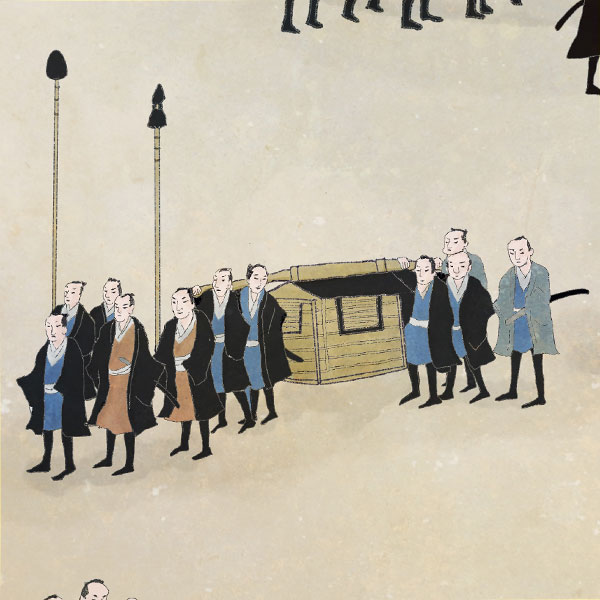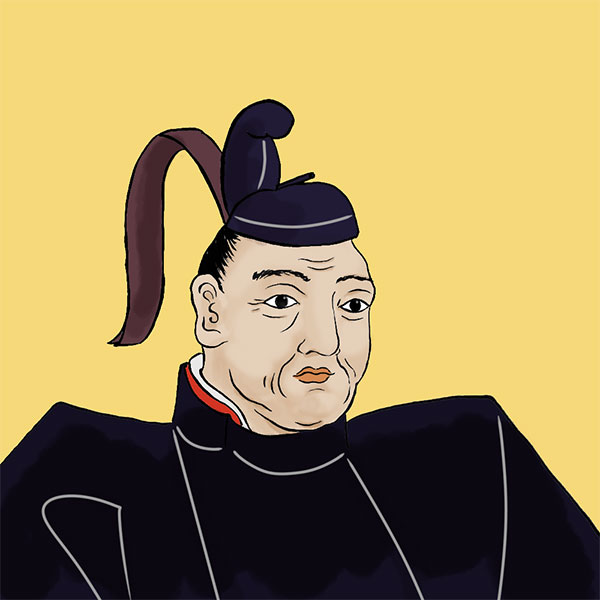Sankin rotation (2/2)Daimyo procession and financial difficulties

sankin katai
- Article category
- case file
- Incident name
- Sankin Kotai (1635-1867)
- place
- Tokyo
- Related castles

Edo castle
- people involved
The distance walked by Sankintatai in a day varies depending on the domain, but is approximately 30km to 40km. Due to the forced marching schedule, it was a life-threatening task for daimyo who were physically weak, had chronic illnesses, or were elderly. Some feudal lords even lost their lives on the way.
Furthermore, as the procession passed through each domain, each domain performed ``hospitality'' such as cleaning the roads and providing horses and men, and the procession of feudal lords returned the money as a rite of passage.
In this way, the procession arrived in Edo. After arriving, they have an audience with the shogun, present a souvenir, and then go around greeting the senior elders and others. The gifts typically include local specialties such as horses, silver, and cloth. In addition, money and goods had to be sent to the kitchen, heirs, and servants of the shogun.
Sankinkotai put pressure on the domain's finances.
The sankin kotai caused various hardships to the daimyo. First, there is the huge cost issue. The travel and labor costs involved in the journey, as well as the compensation and gifts to the clans they passed along the way, put pressure on the clan's finances. It is said that travel expenses alone accounted for 5% to 10% of the Daimyo family's expenses.
For example, the Maeda family of the Kaga domain had a sankin katai in 1808, and they paid 332 kan, 466 monme of silver for lodging, compensation for reservations and cancellations, Kawagoe rent, and souvenirs for important people of the shogunate, or about 5. We spent 5,410 ryo (equivalent to about 500 million yen). However, the amount was unique to the Maeda family, which exceeded 1 million koku, and it seems that most daimyo did not exceed 10,000 ryo.
For example, the Ikeda family of the Okayama Domain (Okayama Prefecture) used an average of 3,000 ryo for about 30 years from 1798. In the case of the Ikeda family of the Tottori Domain (Tottori Prefecture) in 1812, the number was over 1957. Approximately 40% of this cost is personnel expenses, approximately 30% is fares such as horse fare and river crossing costs, and approximately 20% is the cost of purchasing goods at post towns and other places. What was surprising was that accommodation costs accounted for about 5% of the total. However, if you are stranded due to a natural disaster such as a rising river, the cost of accommodation will increase rapidly, so you cannot let your guard down. They sometimes haggled on accommodation to save money.
Some fiefdoms were in financial trouble and did not have road banks, so there were cases where they left Edo but got stranded on the way, or were surrounded by debt collectors and couldn't move. The parade of feudal lords is a great opportunity for merchants to collect money. Especially for the merchants of Edo, it was unbearable to be run away by Kunimoto.
For example, in 1830, when Nabeshima Naomasa, the 10th lord of the Saga domain, was involved in a debt collection scandal during his sankin kota at the age of 17, he was temporarily unable to leave Shinagawa-shuku. Taking this humiliation as a springboard, Naomasa carried out large-scale political reforms and worked to rebuild the domain's finances, and grew the Saga domain, or Hizen domain, into a corner of the Satsuma-cho Toi region, leaving his name as the great ruler of Saga. .
There was a penalty for skipping sankin kotai!
Sankin kotai is a troublesome and expensive process. If you decide to skip work due to illness, won't you be able to skip work? You might think so, but there will be severe penalties.
For example, although this is a story before it was institutionalized, there is the case of Matsudaira Tadanao, the second lord of the Echizen Fukui domain (Fukui Prefecture) in 1623. Dissatisfied with the reward he received during the Osaka Siege, he continued to skip sankin kotai by pretending to be ill, and as a result, he was banished to Kamibungo (Oita Prefecture), where he had retired. Tadanao was the nephew and son-in-law of Hidetada Tokugawa, the shogun at the time. Even the Tokugawa clan was punished, so it must have had a considerable impact on other feudal lords as well.
There were also penalties for being late, and in 1636, Shigenao Nanbu, the second lord of the Morioka domain (Iwate prefecture, parts of Aomori and Akita prefectures), arrived 10 days late without permission. He remained in captivity in Edo for about two years. In addition, there were many unavoidable circumstances such as being late due to natural disasters, or not being able to make it in time because the route had to be changed, in which case there was no problem as long as the shogunate was notified.
The end of the Shogunate is the end of Sankintatai.
The sankin katai was full of problems, but it came to an end with the arrival of Perry in 1853. As the shogunate was under pressure to open up the country, it wanted to reduce the expense of sankin kotai and have each domain work on strengthening its military for the sake of national defense. The spearhead of this movement was Shungaku Matsudaira (Keiei), the 16th lord of the Echizen Fukui domain. Originally, the Fukui clan could not participate in politics because they were feudal lords, but they succeeded in participating in the shogunate government during the chaotic period at the end of the Edo period. This Harugaku proposes the relaxation of sankin kotai.
Although there were many twists and turns, a reform order was promulgated on August 22, 1862, and Sankin Kotai was implemented once every three years, the period of residence in Edo was shortened to 100 days, and wives and children in Edo were transferred to Kunimoto. The decision was made to allow them to return to their home countries. Gifts made during the transfer of sankin were also abolished, greatly reducing the burden on the daimyo.
Afterwards, as the Sonno-joi movement gained momentum and the authority of the shogunate declined, in 1864, the 14th shogun, Iemochi Tokugawa, ordered annual sankin rotation and the restoration of his wife and children's residence in Edo. Naturally, many clans did not comply. In fact, there was a movement to go to work for the Emperor in Kyoto, and the Shogunate was no longer a beacon.
The Edo shogunate came to an end with the restoration of imperial rule in October 1867 and the grand edict of the restoration of the imperial government in December, and the sankin kotai also came to an end.
Reread the article on sankin kotai
- people involved

- WriterNaoko Kurimoto(Writer)I am a former travel industry magazine reporter. I have loved history, both Japanese and world history, since I was a child. I usually enjoy visiting temples and shrines, especially shrines, and often do ``pilgrimages to sacred places'' themed around historical figures. My favorite military commander is Ishida Mitsunari, my favorite castle is Kumamoto Castle, and my favorite castle ruins is Hagi Castle. My heart flutters when I see the ruins of battle castles and the stone walls of castle ruins.




